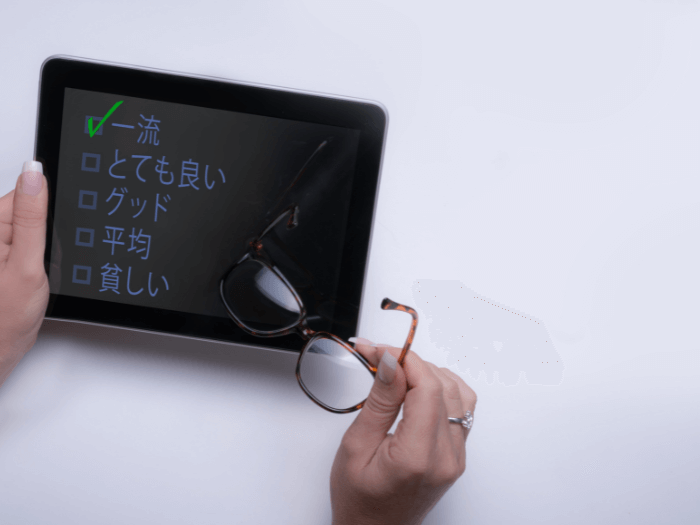
You need to read and write Japanese, right? But you've found out that hiragana is the first stage, and it's got you worried!
Relax.
You've probably heard about mnemonics for learning vocabulary in a foreign language and wanted to know more. Well, the good news is that a similar technique works if you want to learn hiragana too.
And the best part is that using a special process will let you do it in record time.
Prepare to enter a magical realm of speed-learning, one of the sticking points that lock thousands, if not millions, of people out of the Japanese language.
A word of caution first…
Don't bookmark this post for later. Read it from top to bottom. Take notes on how to read hiragana, make the recommended sketch, and then take action.
A massive percentage of otherwise willing people will “save data for later,” ensuring that they never find their way back to it again.
But not you.
You're going to memorise, recall and learn Japanese hiragana in a blazing-fast way that will serve other aspects of your learning needs too.
By the way, if you want to learn Japanese fast and have fun while doing it, my top recommendation is Olly's Japanese Uncovered course which teaches you through StoryLearning®.
With Japanese Uncovered, you’ll use his unique StoryLearning® method to learn Japanese naturally through story… not rules. It’s as fun as it is effective.
If you’re ready to get started, click here for a 7-day FREE trial.
Let's start with the basics before diving deep into hiragana characters and how you will learn them.
Table of Contents
What Is Hiragana?
Hiragana is one of the three Japanese writing systems (hiragana, katakana and kanji). Hiragana specifically is the writing system for grammatical particles and modifiers.
Kanji characters represent a concept, so when you write a verb you use kanji and then use hiragana to change the pronunciation and tense.
Why Learn Hiragana?
Learning hiragana is essential for anyone who wants to master the Japanese language, as it forms the foundation for reading, writing, and speaking the language fluently. Hiragana has 46 basic characters, which represent all the syllables used in Japanese.
How Long Does It Take To Learn Hiragana?
You will be happy to know that hiragana learning doesn't take too long. You can easily learn the script in a week if you focus and use some of the techniques and suggestions in this post.
Should You Learn Hiragana First?
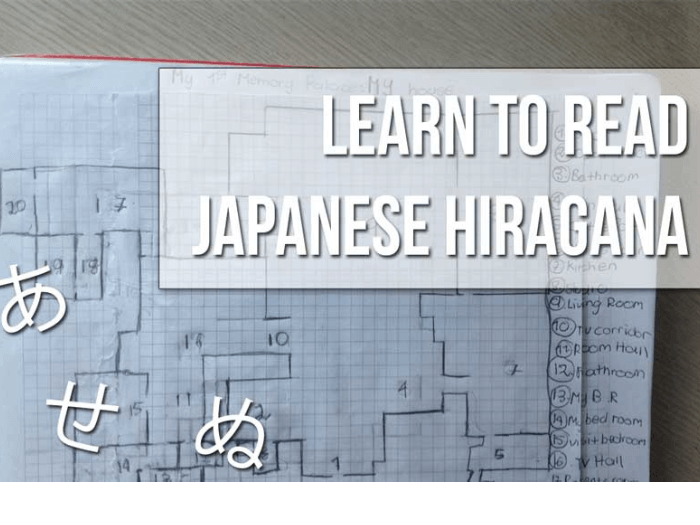
If you're learning Japanese, it is recommended that you learn hiragana first. It's the most simple Japanese alphabet and gives you the foundation for writing Japanese.
Remember, you only need to learn 46 characters to learn hiragana and it is much simpler to read and understand than the other two scrips.
How Are Hiragana Characters Organized?
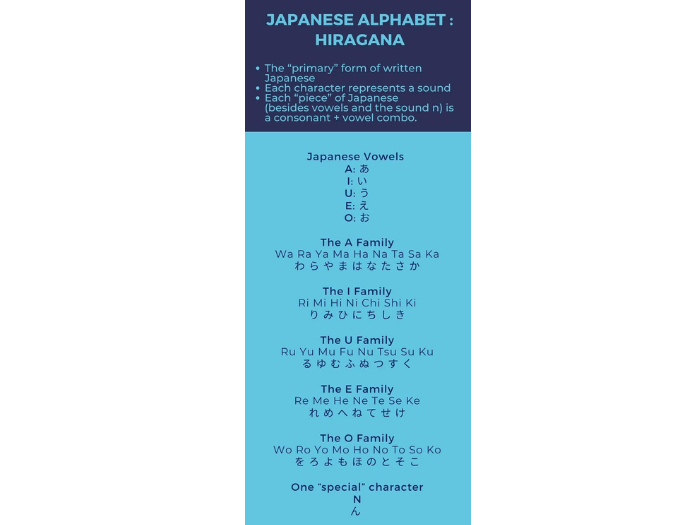
Check any hiragana chart and you will see that the characters are organized by the consonant, with the vowel sounds that follow it.
Each character is a vowel or a constant vowel sound. There are five vowel sounds in hiragana these are:
- a (ah)
- i (ee)
- u (oo)
- e (eh)
- o (oh)
The vowel sounds are combined with consonant sounds:
- k
- s
- t
- n
- h
- m
- y
- r
- w
In hiragana, each character represents a syllable rather than a single consonant or vowel sound.
Writing Hiragana
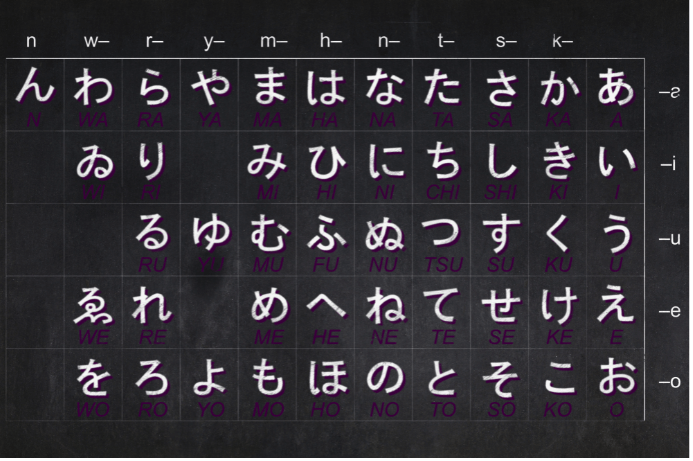
The 46 basic characters can be combined with various diacritic marks to represent additional sounds.
Writing hiragana is based on a few basic strokes and patterns which you can quite easily learn. Each character is formed using a combination of one or more of these basic elements.
These are some of the most common patterns to look out for when learning hiragana:
Horizontal Stroke
Many hiragana characters begin with a horizontal stroke, which is written from left to right. Examples include ka (か), sa (さ), and ta (た).
Vertical Stroke
Another common pattern is the vertical stroke, which is written from top to bottom. Examples include i (い), shi (し), and chi (ち).
Diagonal Stroke
Some characters are formed using diagonal strokes. Examples include ke (け), se (せ), and te (て).
The hook
A hook is a small stroke that is added to the end of a larger stroke to form a hiragana character. Examples include ku (く), su (す), and tsu (つ).
The loop
A loop is a circular stroke that is used in the formation of certain hiragana characters. Examples include ho (ほ), mu (む), and yu (ゆ).
8 Tips To Start Learning Hiragana
#1 Understand The Basics First
Before starting to learn Hiragana, it's better that you have a good understanding of the Japanese language's fundamentals. That includes Japanese pronunciation, grammar, and vocabulary. This will help you to learn Hiragana fast and retain the knowledge.
Start by familiarizing yourself with the basic sounds of Japanese, and then move on to learning basic Japanese grammar and vocabulary.
One of the easiest ways to familiarise yourself with the sound of a new language is by watching movies. Check out these top 9 Japanese movies for language learners.
#2 Use Mnemonics
Mnemonics are an effective technique that can help you remember hiragana quickly.
Mnemonics involve using associations or memory aids to help you remember information.
For example, the character あ represents the sound “a” and can be associated with the word “apple.” Similarly, the character か represents the sound “ka” and can be associated with the word karate. Using such associations can make it easier to remember the characters.
Make up your own mnemonics to make the learning process simple.
#3 Practice Writing
Writing hiragana characters repeatedly is an effective learning strategy. Start by practicing writing each character individually, then move on to writing them in the context of Japanese words and sentences.
It's essential to practice stroke order when writing Hiragana, as it can affect the character's readability and appearance.
#4 Use Flashcards
As with any language, using flashcards can be an incredibly useful tool for memorising hiragana.
Write the hiragana character on one side of the card and hiragana pronunciation and the English word on the other side.
Shuffle the cards and test yourself regularly until you can recognise and pronounce all the characters correctly. Flashcards are a great way to practice reading hiragana and speed up the learning process because you can always test yourself.
#5 Try Reading Japanese Children's Books
Once you feel confident with the basics, you could try reading Japanese books or children's books. Using a book with a story can help you learn hiragana in a fun and enjoyable way. That's what the StoryLearning method is all about.
Books for children often use simple vocabulary and grammar, making them ideal for beginners. Start with books that have furigana, which is a small hiragana next to the kanji that tells you how to read it. This will help you read the kanji as you learn the hiragana.
#6 Consistently Practice
Consistency is key when learning hiragana. It's essential to practice regularly and consistently to retain what you have learned. Set a daily or weekly goal and stick to it. Even just a few minutes of practice every day can make a significant difference in your progress.
#7 Try Group Learning
Learning hiragana in groups can make the process more enjoyable and efficient. You can join a language exchange group, a Japanese language class, or find a language partner either in real life of online.
Learning with others can also help you practice pronunciation and listening skills, and you can exchange feedback and tips with each other.
#8 Seek Feedback
Getting feedback and corrections from a teacher, tutor, or language partner can help you identify and correct any mistakes you might be making. Feedback can also help you improve your pronunciation, writing, and comprehension skills.
If you're learning Japanese alone, try to check in at least once a week with a tutor or language partner so you can check the mistakes you're making.
How To Learn Hiragana Fast With The Magnetic Memory Method
If you're looking for a more unique and interesting way to learn the basic hiragana alphabet, why not try creating a mind map?
One of the goals of using something like the Magnetic Memory Method as a memory technique for language learning is to memorise sound and meaning at the same time using associative imagery.
But to learn to read hiragana and the other Japanese alphabets, there is no meaning as such — just shapes and the accompanying sounds.
This restriction means that all of our mnemonic efforts must be geared towards creating associative images that allow us to instantly recognise a shape and know how it sounds when pronounced.
There are three steps to the process:
#1 Create An Organisational System For The Target Information
The mind isn't like a computer, and that's a terrible metaphor for something so complex and precious. But there is a kind of spatial relationship between how computers can store files in folders and the mind's ability to organise information.
The best way to help your mind store and retrieve information is an ancient technique known as the Memory Palace.
Some people call it the Roman Room technique, Mind Palace, Mental Castle, Apartments with Compartments …
Don't get hung up on the terminology!
The important point is to map out a journey in a familiar building so that you have a place to store the funny images you'll use to instantly memorise and recall the hiragana until you've lodged each hiragana character into long-term memory.
Creating a Memory Palace is easy. Take your home, workplace, a favourite cafe, or any place you're familiar with and draw out a floor plan. Like this:
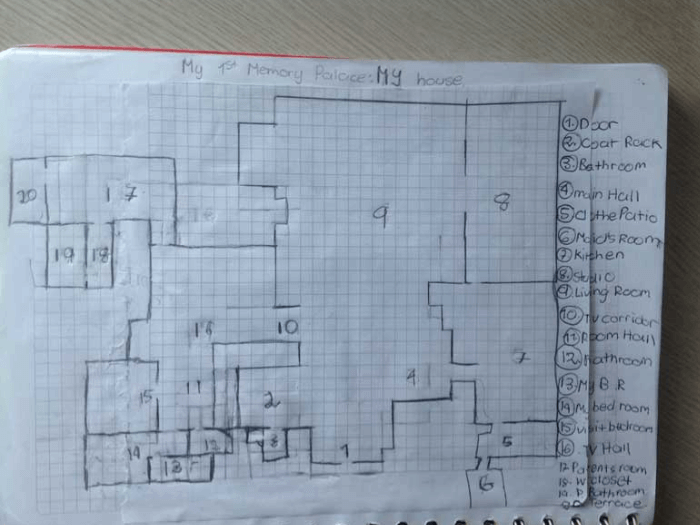
You'll notice that this image is more than a simple floor plan. It is covered with information that indicates a journey through the space.
You'll also notice that the journey has a methodical logic to it. The path leads outward so that the user doesn't wind up at a dead end. It's also basically linear, which means that the user isn't following a confusing path.
These points are important because a key principle is to reduce the mental effort needed to produce the Memory Palace in your imagination so that the bulk of your mental energy falls on creating associative imagery.
#2 Create An Image For Each And Every Character
The image should prompt you to recall both how the character looks and how it sounds.
You'll also add features that help you recall the diacritical marks used to indicate modifications to the characters that produce alternate sounds.
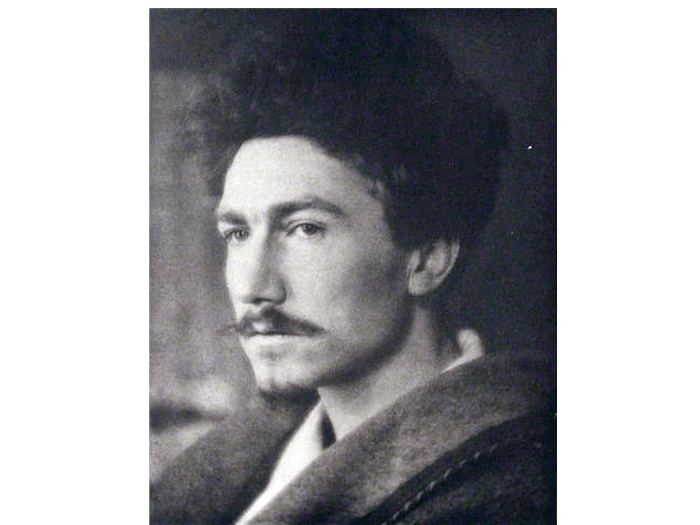
One of the best ways to do this is by creating a Bridging Figure. When I decided to learn Japanese hiragana, I had several, but the poet Ezra Pound helped with the majority of the journey.
I think he came to mind because of his interest in writing that included Japanese characters, but for you, it will be someone else.
The Bridging Figure need not be related to Japanese but should be familiar to you. Someone specific like Johnny Depp will always be better than a fantasy creature because you've probably spent hours of your life looking at him.
A fantasy figure needs to be created from scratch and recreated every time you use it, costing time and mental energy better spent on memorising hiragana.
As mentioned, you want to link sound and shape together. Since you already have a well-crafted Memory Palace, the best thing to do is take your Bridging Figure and imagine it, him or her doing something at the first point that triggers sound and shape simultaneously.
For example:
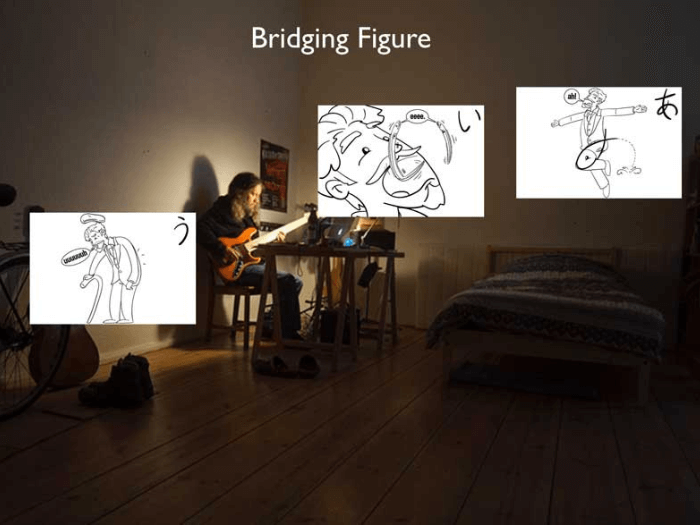
In these three examples, you see Ezra Pound “stationed” at three separate locations in a room with which I am intimately familiar.
On the first station, he is making the sign of the cross while a fish leaps at his feet while making a sound. This bodily configuration looks a lot like the first character of the hiragana, and the sound he makes is designed to match.
In the second image, eels shaped like the target character are bursting from his mouth. In this case, he's not only making the “iii” sound of the character. “Eels” itself contains the target sound.
In the Magnetic Memory Method, this is called the Principle of Compounding, and any time you can add an additional layer or condition that reinforces the target information you're looking for; it will increase the speed of learning, depth of retention, and accuracy of recall.
For the last example, we see Pound bending over his cane with his hat flying up off his head. Combined with his pained grunt, the sound, and image match the target character.
Placed in the Memory Palace, it is now a breeze to zoom into that spot in my imagination and remember the sound of this character whenever I see it or draw it directly from memory during Japanese writing practice.
Being able to read Japanese is really that simple. There's just one final step:
#3 Use Recall Rehearsal To Drill The Characters Into Long Term Memory
I know that a lot of people love electronic flashcards. There's nothing wrong with them, and with dedication, the results can be spectacular.
But when using a Memory Palace, the time spent on spaced-repetition algorithms can be saved. Try using your Memory Palace to create your own algorithm instead. You'll be surprised by how little time and effort you need.
Everyone is different, but a general Rule of Five works well. I've adapted my version of this guide from the shockingly successful mnemonist Dominic O'Brien.
It goes like this:
After your initial memorisation efforts, follow the journey through the Memory Palace:
- 5x the first day
- x1 per day for 5 days
- 1x per week for 5 weeks
- 1x per month for 5 months
Here's the beautiful thing:
You're not going to need that long, especially if you do five rehearsals every day for five days.
Most likely, you'll have the sound and meaning of every character in your long-term memory from the first couple of goes, especially if you are also making Japanese a daily affair – which you should be as a serious student of the language.
Learn Hiragana FAQ
Is hiragana easy to learn?
Yes, hiragana is the easiest of the three Japanese writing systems. It has 46 basic characters, each representing a single sound, and is phonetic, meaning pronunciation is consistent. With practice, most learners can memorise it in a few days to a couple of weeks.
What is the easiest way to memorize hiragana?
The best way to memorise hiragana is through mnemonics, flashcards, and writing practice. Apps like Anki or Kana Quiz help with repetition, and associating characters with images or stories makes them easier to remember.
How long will it take to learn hiragana?
Most learners can memorise hiragana in a few days with focused practice, while mastering reading and writing smoothly may take one to two weeks. Regular practice and exposure to Japanese words help reinforce recognition.
In what order should I learn hiragana?
Start with the basic 46 hiragana characters, following the a-i-u-e-o order: あ (a), い (i), う (u), え (e), お (o), then move through the k, s, t, n, h, m, y, r, w rows.
After mastering the basics, learn dakuten (゛) and handakuten (゜) modifications (e.g., が, ぱ) and small や, ゆ, よ combinations (e.g., きゃ, しゅ).
Learn Japanese – No Struggle Necessary!
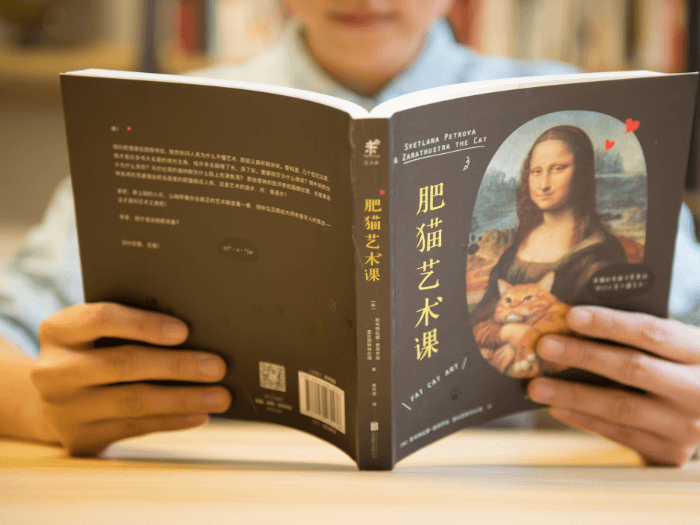
Master this technique, and things will keep getting better and better for you.
After completing the hiragana, repeating the process with katakana will take no time, and you can then think about applying the technique to kanji too.
But one step at a time!
If you're ready to begin learning how to read in Japanese, enroll in Japanese Uncovered now. In the course, you'll learn to read not just hiragana but katakana and kanji too!
The best way to learn hiragana is through story and with the entertaining story-based method in the course, you'll have a lot of fun as you learn effectively.

Olly Richards
Creator of the StoryLearning® Method
Olly Richards is a renowned polyglot and language learning expert with over 15 years of experience teaching millions through his innovative StoryLearning® method. He is the creator of StoryLearning, one of the world's largest language learning blogs with 500,000+ monthly readers.
Olly has authored 30+ language learning books and courses, including the bestselling "Short Stories" series published by Teach Yourself.
When not developing new teaching methods, Richards practices what he preaches—he speaks 8 languages fluently and continues learning new ones through his own methodology.










































